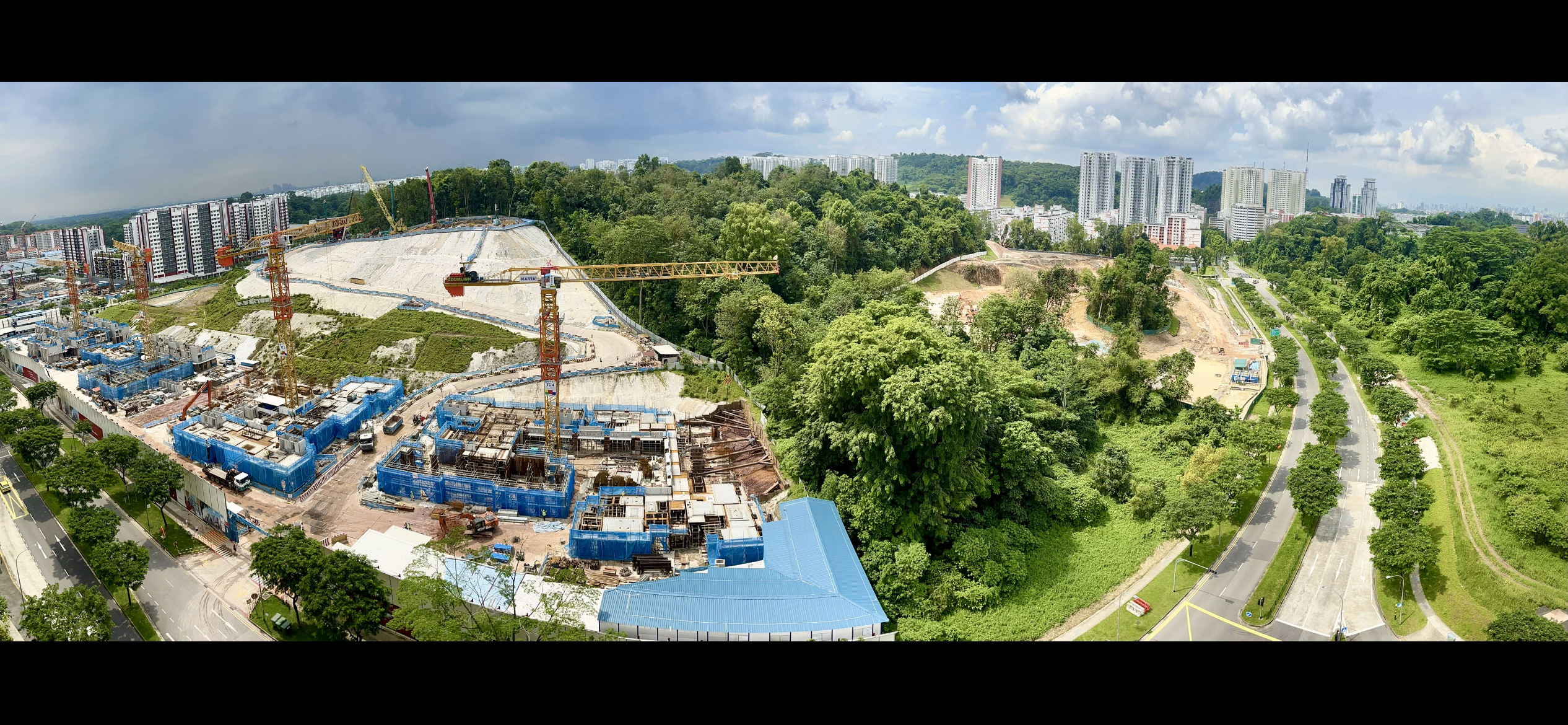City in Nature: A marketing slogan?
Singapore, which is less than half the size of London, has a population of nearly 6 million people. As the population grows by more than 3 percent over the past year, Singapore’s push to develop more housing quickly includes converting forests into residential high-rise buildings.
One consequence of the rapid deforestation and urbanisation is that it has pushed the wildlife, such as wild boars, otters, monkeys and pythons, out of their natural habitats.
“When habitats get fragmented, these wildlife who occupy small green pockets are forced to use man-made barriers, such as roads or expressways, to get to other inhabited pockets,” said Ms Anbarasi Boopal, Co-CEO of ACRES Wildlife Rescue, a non-profit, non-governmental organisation.

Nature groups are also concerned about the loss of green spaces and its impact on biodiversity. Mr Adrian Loo, director of Wildlife Management Group, NParks, said “Singapore is very small; whatever we have is this island. I think it is very important that our people also understand that there is biodiversity to be conserved.”
At the same time, critics are not convinced of the government’s plan, like Mr Robin Hicks, who has been reporting on sustainability in Asia for 16 years.
“‘City in Nature’ is a little more than a PR platform, a marketing slogan to attract overseas visitors and overseas investments. People are questioning that growth mandate: Do we really need to grow beyond 6 million people? Do we really need to build more residential areas?”
Robin Hicks, sustainability journalist who co-wrote “A city in nature — or a city without nature? The uncertain fate of Singapore’s last forests” (Eco-Business, 2021)
To me, Singapore will only earn the right to call itself a “city in Nature” if it adopts the 2022 United Nations Biodiversity Conference’s recommendation to protect 30 percent of its land and sea. Currently, only about 10 percent of Singapore’s land area has been set aside for conservation.
Tengah “forest town”: Eco town or ecocide?
The BBC News video commentator noted that more expansion of residential areas into the forest habitats would lead to more displacement of wildlife.
As Ms Boopal put it, while “we are bringing ourselves closer to nature, are we ready to encounter wild animals, and do we know what to do or not to do when we come across wild animals, such as a snake sighted in our garden?”
Meanwhile, Tengah forest (the last sizeable contiguous green space occupying 700 ha in western Singapore) is in the process of being cut down for a new development, which is meant to be Singapore’s first housing estate built within nature. But in actuality, 90 percent of this forest will be cleared for the project.

Also, Tengah “forest town” is a misnomer. This is because having the forest reduced to only 10 percent of its original size and squeezed along a narrow corridor running through a concrete town with no confirmed eco-links is like a prison for the wildlife.
“The 100m width will not be enough to mitigate disturbances for wildlife, because 50m is the “standard buffer for a forest habitat on all flanks” and there will not be interior space.”
From “Nature Society urges HDB to save more of Tengah new town’s forests for wildlife” (TODAY, 30 October 2018)
Without any guaranteed access to the water catchments on both western and eastern sides of Tengah forest, the critically endangered Sunda pangolins risk localised extinction due to habitat loss, inbreeding and lack of genetic diversity.
The globally endangered long-tailed macaques and native wild boars will also likely be displaced from their fragmented habitats and end up wandering into residential areas and risk conflicts with humans again.
Moreover, Tengah forest serves as the only coherent ecological corridor left in Singapore for the wildlife (including endangered species) to move between the western water catchment and the central nature reserves.

To avert a potential ecocide, a petition (which has over 10,000 supporters, as of 25 May 2023) has been created by nature advocates to call for the preservation of at least 30-50 percent of Tengah forest to protect biodiversity and tackle climate emergency, while also proposing alternative solutions, such as focusing on redeveloping brownfield sites or previously developed lands.
Speaking of climate emergency, Singapore recently experienced a record-matching temperature of 37 degrees Celsius on 13 May 2023, which prompted university academics to recommend a combination of implementing green infrastructure and nature-based solutions alongside lifestyle adjustments to double up as protection from urban heat island effects and help tackle urban heat island.
“Considering urban planning, green spaces such as forests and parks as well as blue spaces such as lakes and rivers should be preserved, and where possible, increased in size and number.”
From “Commentary: It’s time to cool down the heat as Singapore hits record-high temperature” (Channel News Asia, 21 May 2023)
Time is running out
To date, over 40 percent of Tengah forest has been cleared for development, and the next Build-To-Order (BTO) public housing site in the forest is due to be launched on 30 May 2023.
Unfortunately, this new BTO development site is located around the same area where the critically endangered Sunda pangolins (Manis javanica) have been found, as reported in Tengah North environmental impact studies (EIS) report.

Clearing the forested habitat in this area is likely to be disastrous for our rare pangolins and other resident wildlife, so time is running out for us to save our endangered species.
This may well be our last chance to save the threatened biodiversity in Tengah forest (and in Singapore in the long run).


Leave a comment